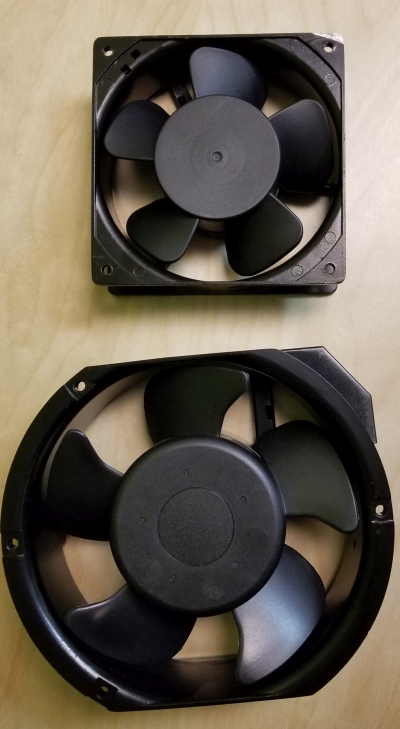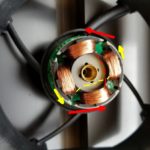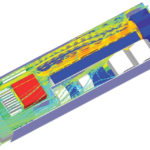Cooling fans designed for environments more harsh than an office building may carry a special IP rating that designates resistance to different levels of dust and moisture. Here are a few basics when it comes to the differences between fans made to different IP ratings.

The IP in IP rating stands for ingress protection. IP ratings have two digits. The first digit signifies the level of protection against solids (i.e. dust) while the second digit signifies level of protection against liquids. The liquid spelled out in the rating is water. Levels of liquid protection basically amount to the degree to which the device withstands either full immersion in water or a water spray. Different IP ratings cover whether the water exposure is at low or high pressure, and at what angle the spray is applied. And there is one IP rating that covers resistance to steam-jet cleaning.

What might be the most common IP ratings for fans is the IP54 and IP55 ratings. These basically say the fan stands up to moisture that isn’t applied aggressively, i.e. from a high-pressure jet. The main mechanism that protects the motor electronics from dust and moisture in IP54 and IP55 fans is the seam between the stator and rotor. Manufacturers keep the gap relatively tight, often with a significant amount of distance from the gap to motor conductors, to discourage invasion of motor parts by dust and moisture.

To realize IP ratings more stringent than IP55, fan makers generally resort to encapsulating the motor internals. This is relatively easy to do in ac fan motors which are generally squirrel cage designs. Their chief energized electrical component consists of the stator windings. Encapsulation of EC fan motors is a bit more involved because it entails putting water-proof coatings on circuit board components. Nevertheless, it is still quite manageable.
 It is also interesting to note that both plastic and metal fans can be had with stringent IP ratings signifying resistance to immersion and various kinds of high-pressure washing. Thus metal fan components by themselves aren’t a requirement for upper levels of IP ratings. The usual rationale for specifying a metal fan is for uses outdoors where there is a possibility of the fan being hit by debris that is a lot bigger than dust particles.
It is also interesting to note that both plastic and metal fans can be had with stringent IP ratings signifying resistance to immersion and various kinds of high-pressure washing. Thus metal fan components by themselves aren’t a requirement for upper levels of IP ratings. The usual rationale for specifying a metal fan is for uses outdoors where there is a possibility of the fan being hit by debris that is a lot bigger than dust particles.




very clear and good article easy to understand. Thank you